Lead nurturing is the process of building good relationships with prospects by sharing valuable resources and relevant offers and guiding them through each stage of a sales funnel. It might involve using email campaigns, social media advertising, personalized content, websites, and other communication channels. Lead nurturing enables marketers to turn leads into customers.
In this article, we’ll explore the importance and benefits of lead nurturing, unveil the difference between lead nurturing and lead generation, and show you how to create an effective lead nurturing strategy. We’ll also teach you how to use marketing automation to achieve success as brands in our outstanding examples.
Why is it crucial to nurture leads?
Lead nurturing is essential for every business because it allows companies to establish trust, brand awareness, and recognition, necessary for long-term relationships with customers. When a business delivers personalized, relevant content that resonates with leads’ needs and challenges, it keeps prospects engaged and makes them consider their solution. Moreover, constant interaction with potential customers helps these leads get all the necessary information and answers, reducing the length of the sales cycle and encouraging faster purchasing decisions.
When marketers effectively nurture leads, they get higher conversion rates, which results in better ROI. It contributes to the overall profitability and success of the company.
Yet, to understand why every business needs to implement lead nurturing, you need to review all the benefits you can reap. Lead nurturing helps:
Benefits of Lead Nurturing
Lead nurturing provides numerous pros to businesses, and you’ll be able to discover the most important of them in this section. Lead nurturing helps:
- Boost engagement. By targeting potential customers with personalized email campaigns, social media ads, PPC, YouTube in-feed video ads, and others, you increase the chances of interaction such as opens, clicks, click-throughs, etc. Leads can engage with your social media profile, explore products on your website, like, comment, share, and ask questions in your DMs after they see products they find interesting. If you tailor your campaigns specifically based on prospects’ browsing history and demographics, you can even encourage conversion.
- Help educate prospects. With relevant content and consistent interaction, you can easily provide all the necessary information about a specific product or service, encouraging faster and well-thought-out purchasing decisions. You can use email campaigns, PPCs, sponsored content on social media, influencer marketing, or ads on YouTube to create awareness about the products or services you offer.
- Create personalized campaigns. Lead nurturing isn’t only about sharing information with potential customers but also understanding what challenges, preferences, and needs these leads have and providing them with targeted offers. It enables you to analyze potential customers’ behavior, demographics, and browsing history and develop a personalized solution. You can target them with personalized ads and email campaigns and allow these people to find the necessary items faster.
- Ensures consistent communication. Lead nurturing requires you to share some new information with prospects step by step consistently. This way, they become aware of your company, explore your products, and become acquainted with the benefits they can reap. It allows you to establish consistent communication with your leads.
- Establish trust and credibility. Before purchasing with a brand, prospects need to trust the company. They might need to search for reviews and customer feedback. However, the right lead nurturing strategy will help you build trust and good relationships with your leads faster. By sharing relevant information on your website and in email campaigns, providing personalized recommendations in social media ads, and displaying the right solutions in PPCs, you can build credibility. Customer success stories on your website, social proof in email campaigns, and user-generated content in your social media will assist you in trusting relationships with potential customers.
- Shorten the sales cycle. When you manage to answer all prospects’ questions, address their concerns, and provide the right solutions, you’ll be able to influence the decision-making process. With the right lead nurturing strategy, you can shorten this process and encourage leads to make decisions faster.
Now that you know the advantages, it’s time to proceed to the difference between lead nurturing and lead generation. This is because these two concepts are sometimes used interchangeably, although they mean different processes.
Lead Nurturing vs Lead Generation
People often confuse lead nurturing and lead generation because they are both a part of the wider sales and marketing funnel and imply active interaction with potential customers. To make the difference clear, we’ll review each process in detail in this section.
Lead nurturing is the process of interacting with potential customers to build trusting relationships with them. It involves sharing valuable information, providing personalized recommendations, answering prospects' questions, targeting them with ads, etc. Marketers provide leads with resources and offers that might interest them using different marketing channels such as email marketing, advertising on Google, YouTube, social media platforms, influencer marketing, etc.
Lead generation is the process of attracting leads and converting them into customers. During this process, marketers target specific audience segments that have shown interest in a company’s product. To achieve these goals, businesses create dedicated landing pages with subscription forms to gather leads’ contact data, send targeted email campaigns with offers, add lead magnets to get new subscribers, use paid ads, and add CTAs to encourage prospects to take the desired action.
In short, lead generation and lead nurturing are the two processes that complement each other. While lead generation
Now that you have a clear understanding of both processes, it’s time to proceed to the next section to reveal how to create an effective lead nurturing strategy.
How to create an effective lead nurturing strategy?
To encourage more conversions, you need to develop an effective lead nurturing process. We’ll show you step-by-step how to do it successfully.
- Score all leads. Lead nurturing starts with lead scoring, the process of identifying where a particular lead is within the sales cycle. You can leverage various lead-scoring tools to assess leads based on a set of demographic and behavioral scoring data. Marketers can also tap into past experiences with different types of customers to create lead scores. Rank your prospect on their likelihood to convert into customers. Once you assign your leads scores based on their interest and demographics, you’ll be able to identify which of the prospects are ready to move down the sales funnel soon.
- Develop buyer personas. Consider developing your ideal customer profiles to understand the preferences, challenges, behavior, and needs of your potential customers. By creating personas, you’ll be able to craft content for each buyer, making it more possible for them to convert. This should cover content at different stages of the sales funnel, including educational materials for new subscribers, product recommendations during the consideration stage, and product comparisons during the decision stage.
- Outline your customer journey. You should identify the stages of your customer journey, from the first touchpoint to the purchase. After outlining each of the stages your customers need to take, think of the relevant content for each of them. For example, for prospects in the awareness stage, you should run advertising on social media like Instagram and Facebook, start advertising campaigns on search engines like Google, partner with influencers, and participate in various industry events, webinars, trade shows, meetups, workshops, etc. Since prospects at their consideration stage still hesitate between several solutions and compare them, you should provide them with product comparisons, case studies with quantitative data, and free samples. For the decision stage, consider offering free trials, live demos, consultations, and coupons to drive a positive decision.
- Develop personalized content. Each customer is unique regarding their needs, challenges, preferences, and interests and thus requires a tailored approach. By creating content that resonates with each potential customer, you’ll be able to drive interest and move these leads down the sales funnel. With personalization, prospects will feel more engaged and stick to your brand.
- Leverage marketing automation. With marketing automation, you can run automated campaigns and deliver relevant messages after prospects perform specific actions. These include new sign-ups, abandoned carts, site visits, even reminders,
- Evaluate campaign results and adjust where necessary. You should measure the engagement of users: email open and click-through rates, the time it takes to move a lead within the sales cycle, and the number of leads that made actual purchases. By tracking these essential metrics, you’ll be able to understand how well your lead nurturing strategy works with your prospects.
Now that you know how to develop an effective lead-nurturing strategy, let’s check out some of the best lead nurturing tactics.
11 Inspiring Lead Nurturing Tactics to Drive Growth
- Create targeted content for each stage in your buyers’ journey
- Follow-up leads with automated campaigns
- Combine marketing channels
- Personalize content
- Send automated messages through the chatbot
- Organize educational webinars
- Send SMS
- Share social proof
- Expand your customer profile
- Run retargeting campaigns
- Use surveys
There are many effective ways you can improve your lead nurturing strategy. The main of them we will cover in this section.
Create targeted content for each stage in your buyers’ journey
Valuable content is crucial to nurturing your leads effectively. Depending on a user’s stage in your sales funnel and the results of lead scoring, develop targeted and relevant content for each lead. It will help you educate them and move them further down the sales funnel. For example, top-of-funnel leads need articles that answer their common questions. You can discover them by looking for popular search queries using Ahrefs. Leads who are in the consideration stage need more proof and high-quality content that will help them realize why your brand is the best choice. Such content includes comparisons, case studies, webinars, etc. Bottom-of-funnel leads just need the last push since they’re ready to buy. Provide them with a free trial, demo, FAQs, etc.
For instance, BuzzSumo sends prospects email campaigns providing information about the free webinar covering the platform’s most powerful features, use cases, and Q&A session at the decision stage of the buyer’s journey.
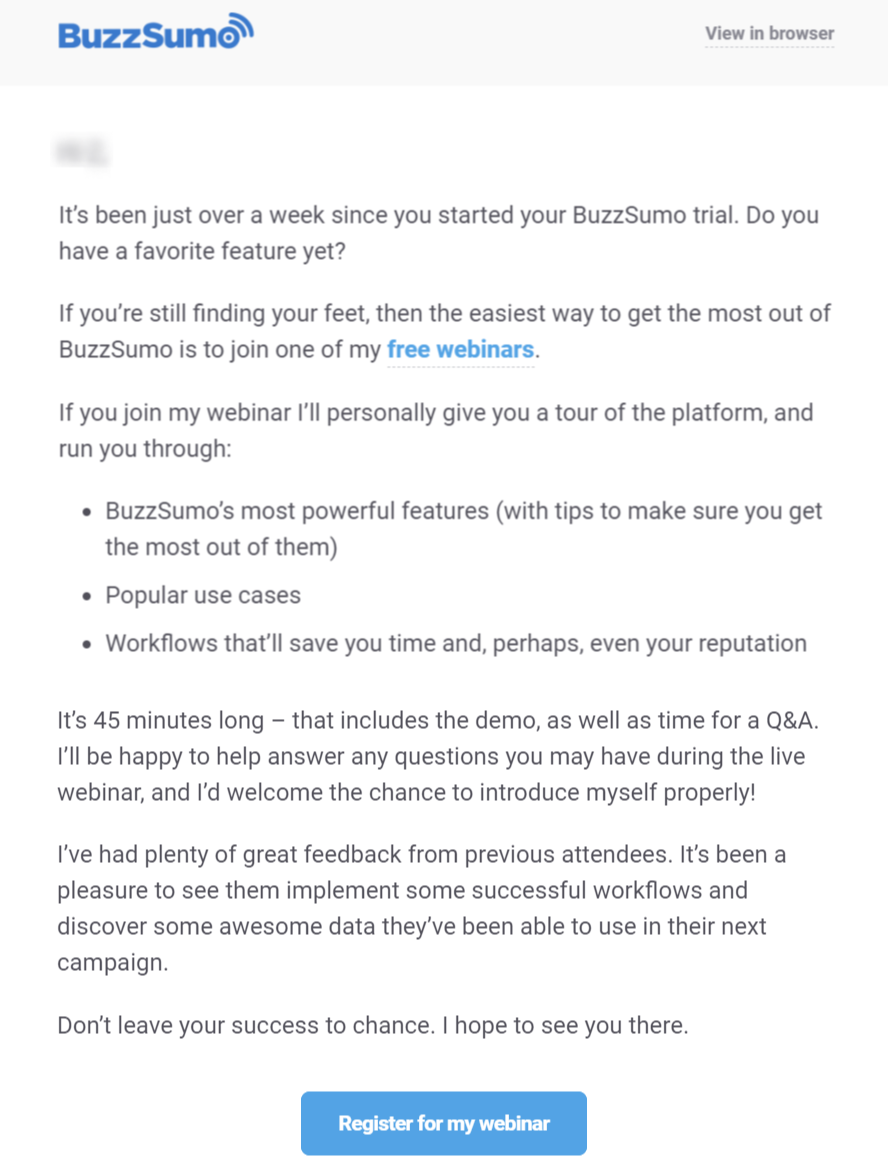
Follow-up leads with automated campaigns
You can lay back in your chair and leave educating leads to email marketing automation. With its help, you no longer need to send each lead a different message manually. There are a lot of special services that allow marketers to set up automated email sending based on subscribers’ actions. This way, every lead will receive a personalized and relevant email according to their position in the sales funnel. For example, after a new user joins your mailing list, they receive an onboarding email series based on their engagement. If a user adds a product to their shopping cart without buying, you can send them an abandoned cart email with a special discount.
Below, you can see how Duolingo marks customers’ anniversaries with the platform.
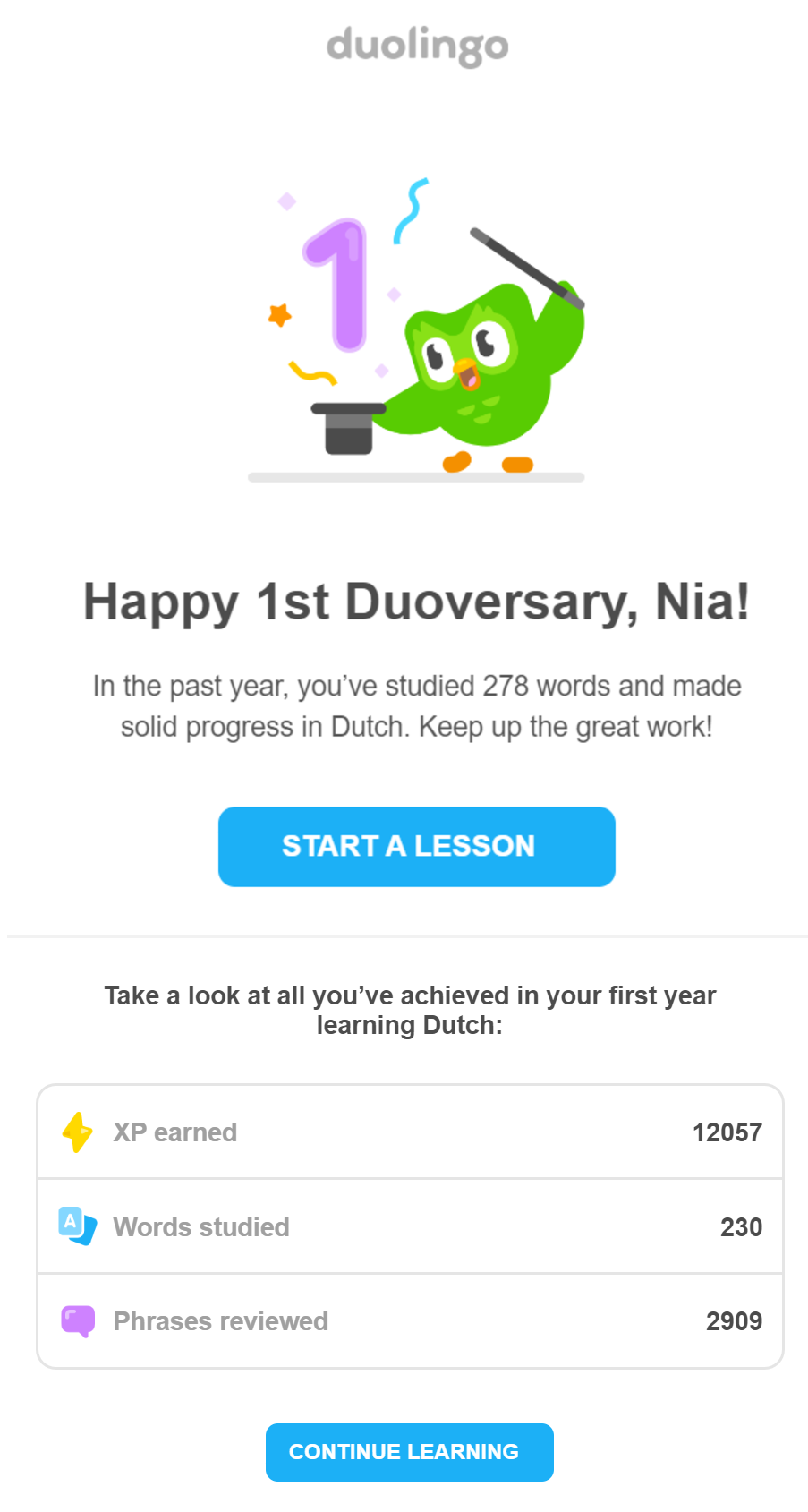
Combine marketing channels
You can’t ignore the abundant number of channels available today. Combine them to personalize your approach to each customer and increase your outreach. You can send automated campaigns, SMS, and web push notifications, help customers via chatbots, boost engagement on social media, run retargeting campaigns, utilize PPC ads, and much more. You need to be where your customers are.
For example, after visiting L'Occitane’s website and subscribing to its email newsletter, users can not only get emails with offers but also view advertising on various marketing channels, including YouTube.
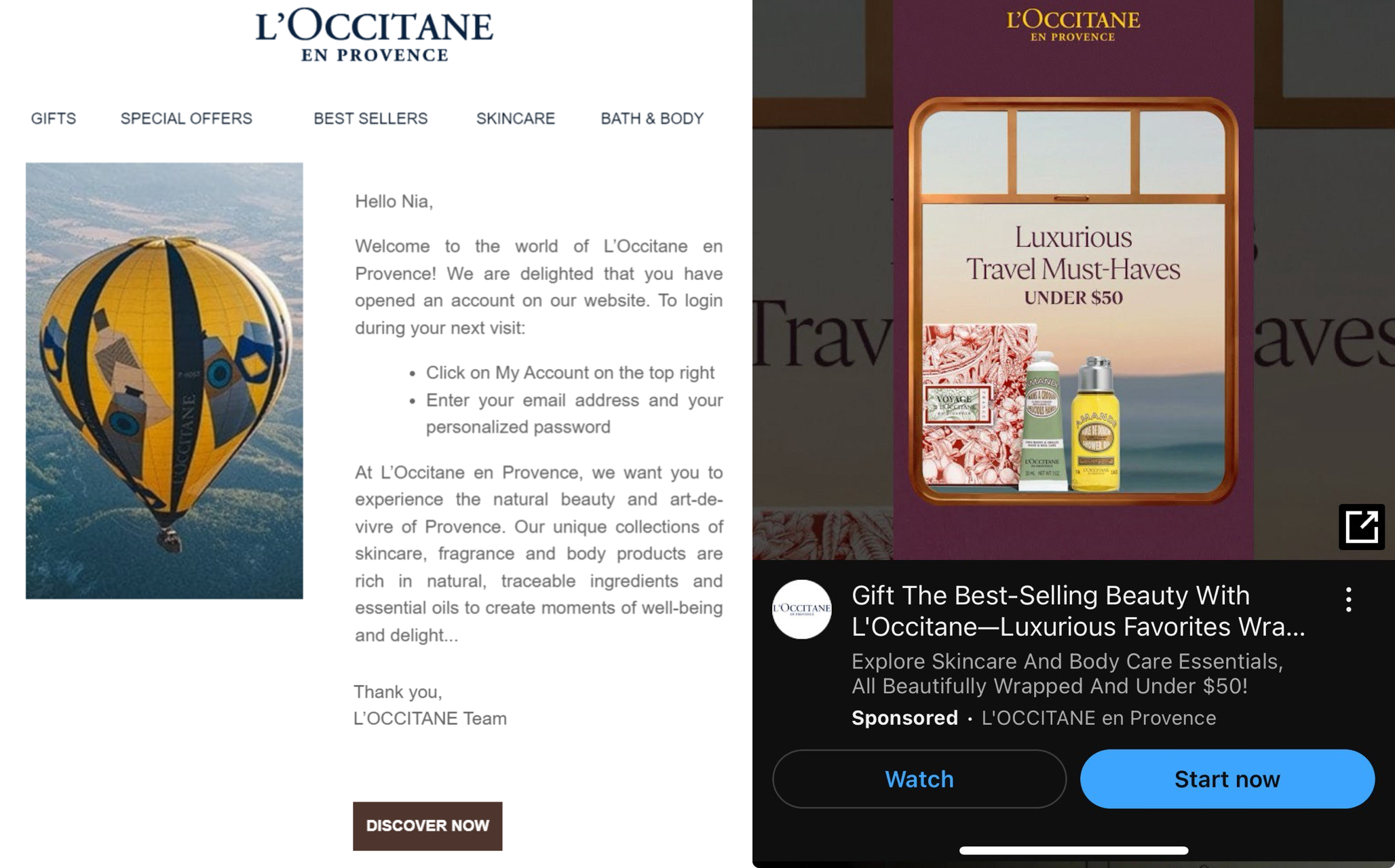
Personalize content
You should take advantage of information about prospects’ interactions, including browsing history, email opens and clicks, items in the shopping cart, products viewed, and more. This data will help you deliver the content these leads are looking for, allowing you to meet their needs. You can send them email campaigns with product recommendations, offer discounts on the items they viewed, or notify them about free shipping for the first order.
For instance, Coursera delivers recommended courses based on the mentioned preferences. Moreover, the company invites its users to update their profiles to get more specific recommendations.

Send automated messages through the chatbot
When you have some new drops, holiday or season sales, promotions, or enticing reward programs, make sure to inform prospects about it. The best way to do it is to send an email campaign or a message to one of the messengers you use for communication. It’s always a good idea to implement a chatbot and schedule automated messages when you have some interesting offers, events, rewards, gifts, etc. They always drive interest and encourage potential customers to at least open the message. It will take minimum effort from your team but can bring new customers to your business.
Below, you will find an example of Genki’s chatbot. People who search for insurance companies can visit the website and get answers to the most common questions in no time.
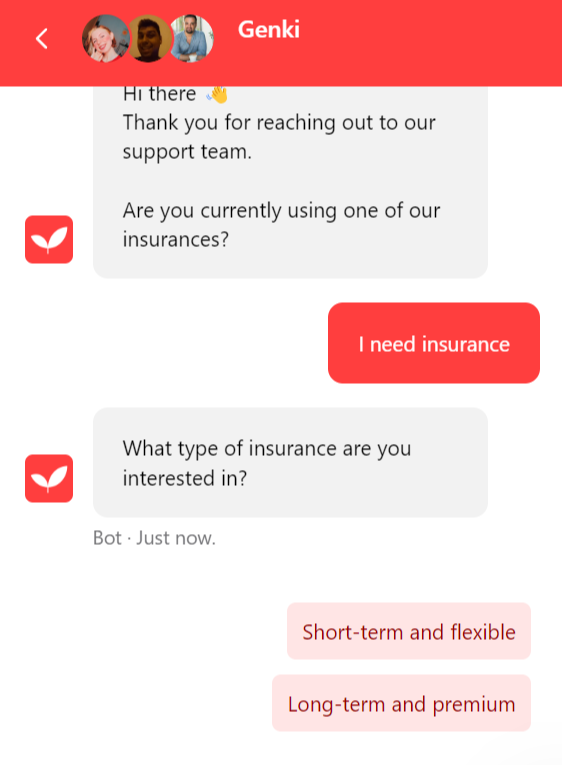
Organize educational webinars
Many companies organize webinars often, and they do so for a reason. With the help of webinars, businesses spread their knowledge, interact with the community, introduce their businesses to a wide audience, and nurture leads. If you succeed in providing valuable information to participants, you’ll not only educate prospects about the product but also identify and prioritize potential customers based on their engagement, questions, and responses.
SendPulse Academy is an excellent example of how the company nurtures leads. By sharing valuable information, experts introduce the product to the community and drive interest.
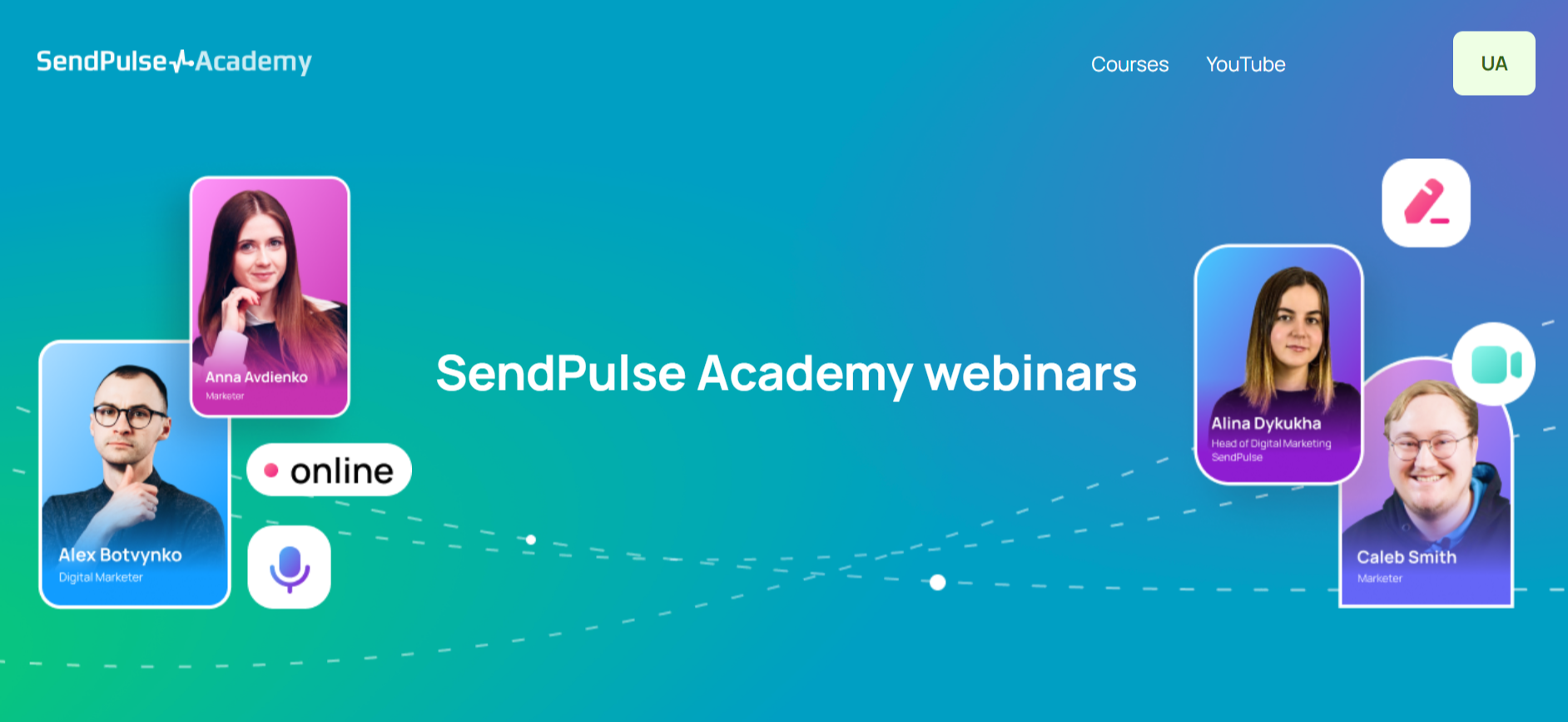
Send SMS
Although this method might seem old, it’s still very much effective. SMS has higher visibility and open rates. It’s more likely prospects notice an SMS rather than an email when there are dozens of them in the inbox. There’s no need to use SMS marketing often. Consider sending these short messages when something really interesting comes out, such as sales, big discounts, a buy-one-get-one promotion, free shipping, etc.
Below, you can see how an ice cream brand uses SMS marketing to inform customers about its “Buy One Get One” promo.
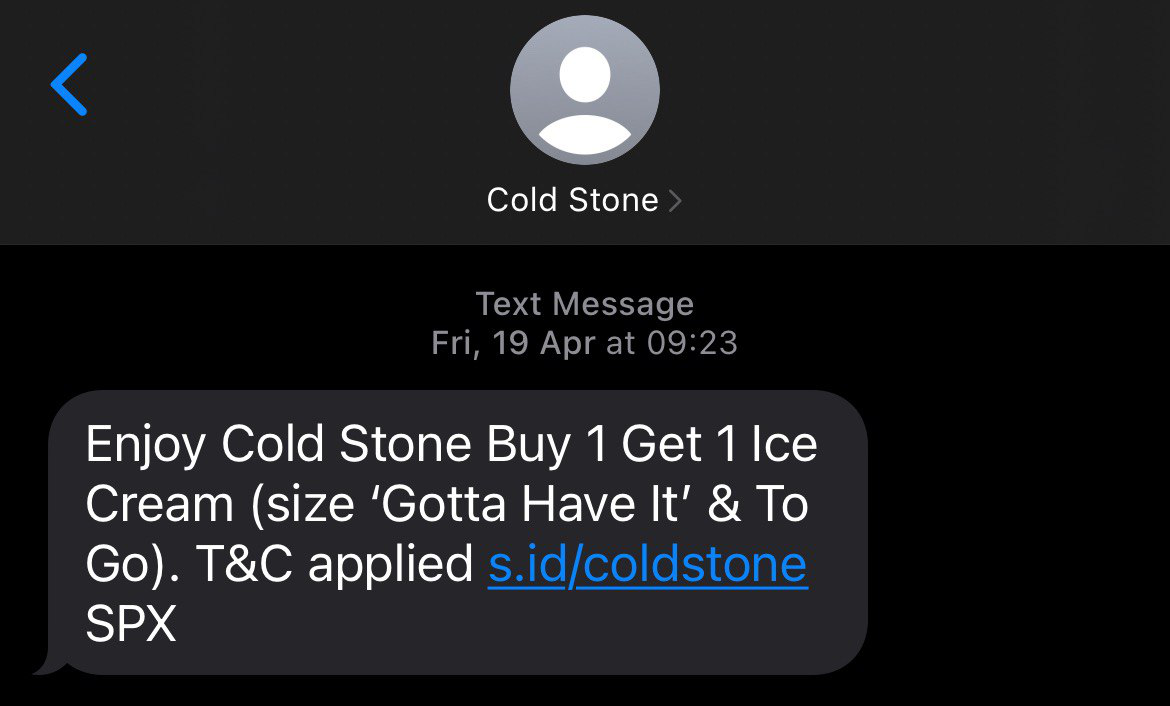
Share social proof
Provide prospects with case studies, customer success stories, and testimonials so that prospects can find out that there are people who already purchased the products and reached the necessary results. It will help leads discover the benefits of your product and your company to stay top of mind. Consider including social proof on your website, in your email campaigns, and on social media to build trust.
Below, you can see how Brevo demonstrates its excellence among customers. When users visit its website, they find the brand’s awards and the number of reviews on various platforms. Even more, the website contains customer success stories that encourage trust and credibility.
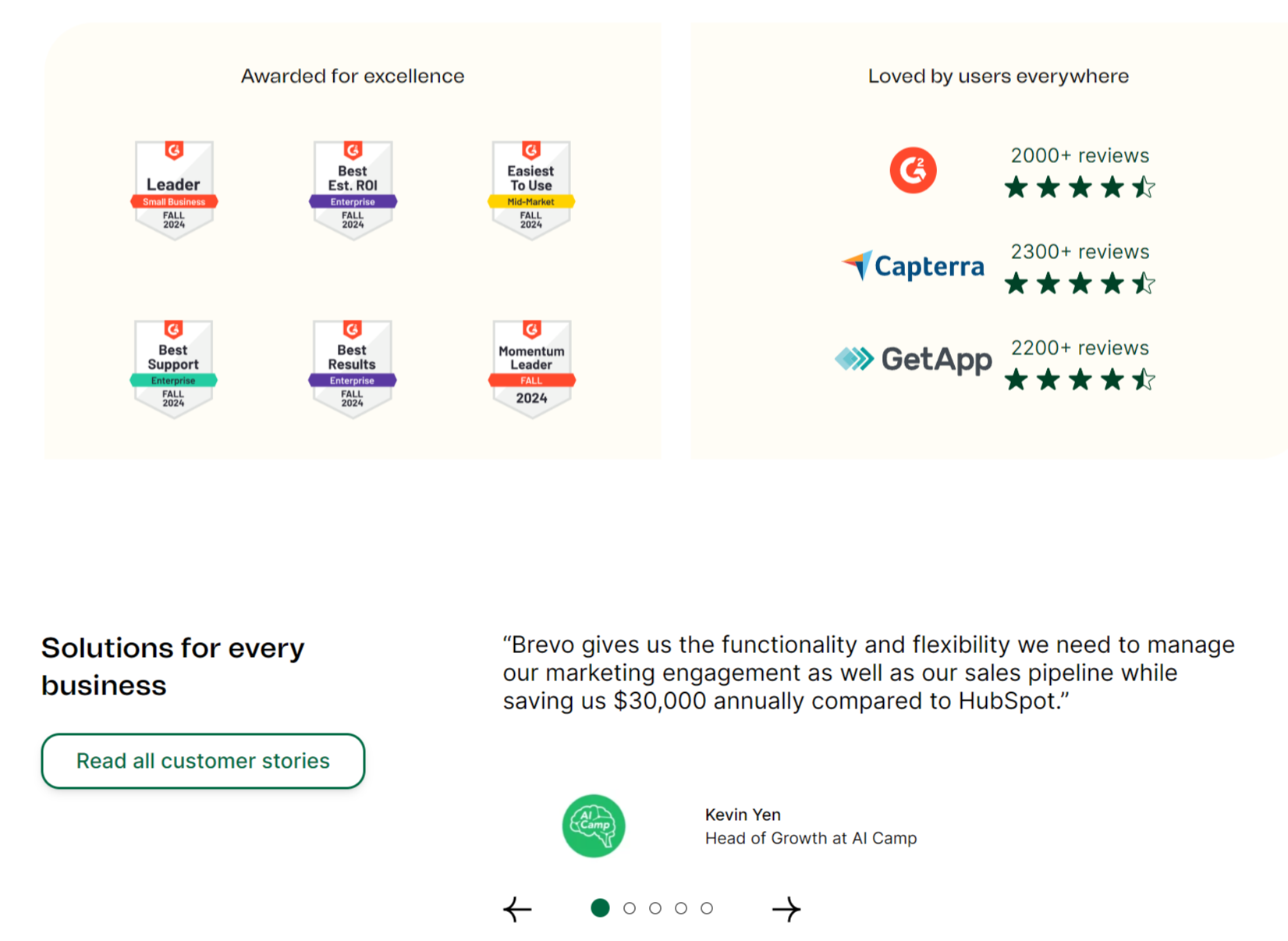
Expand your customer profile
Ask prospects to fill out forms and surveys and note all the information about their interactions. Then, use this data to create a more detailed customer profile. It will help you develop a more personalized experience for lead nurturing. You should also use this information to review the content format you use to optimize your strategy.
Below, you can see how Codeacademy manages to find out more about its potential customers. After new users sign up for the service, they need to answer three simple questions regarding the topics they want to discover, the goals they strive to achieve, and the level of knowledge they already have. By using this short survey, the platform can create a more enhanced customer profile and ensure personalized experiences.
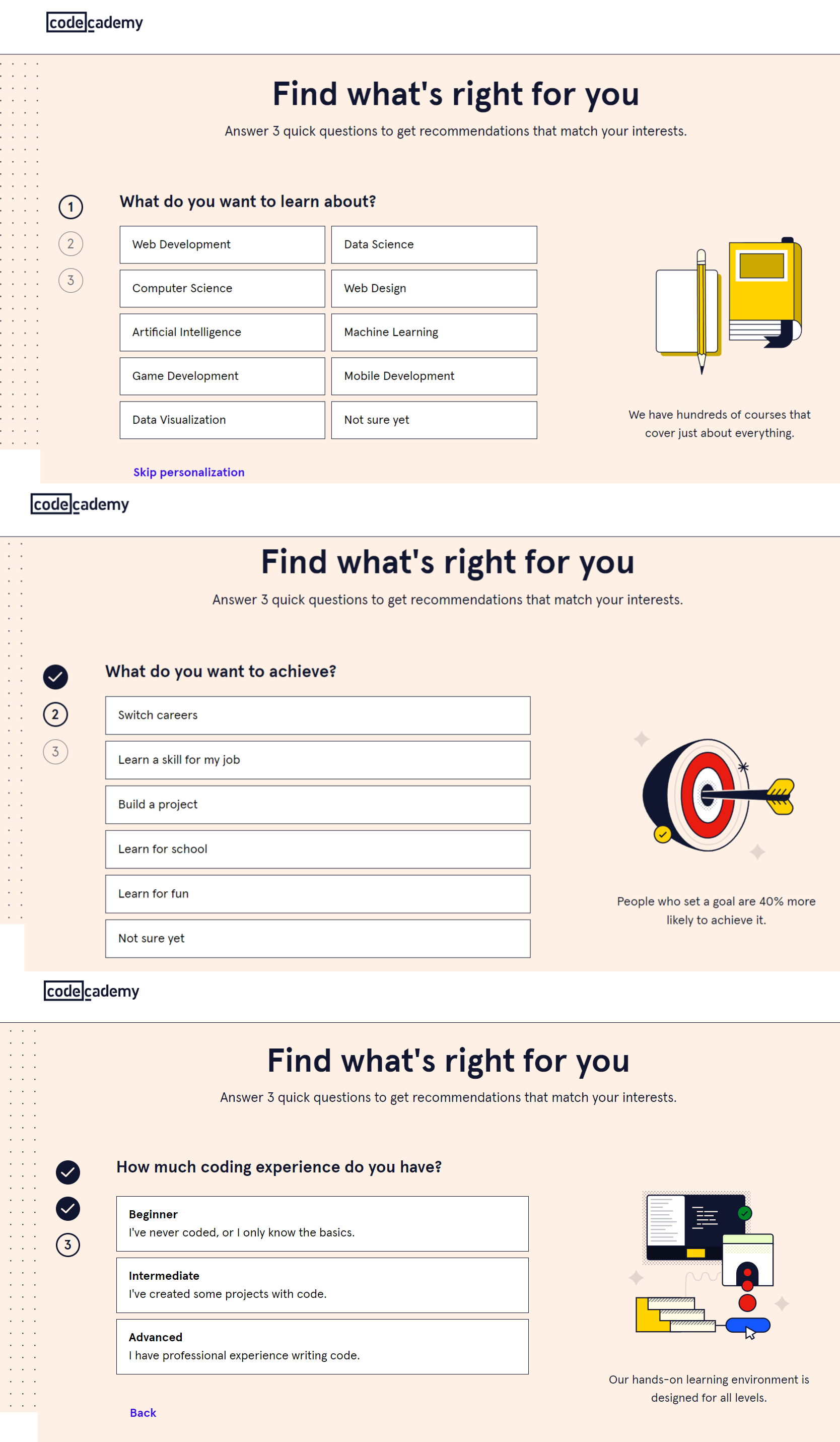
Run retargeting campaigns
Consider using ads on social media or Google to reconnect with prospects who have shown interest but haven’t completed a desired action. You can run advertising campaigns that include special offers or resonate with their interactions. It will help you gain their attention back.
Below, you will find a retargeting email campaign from Temu. The brand reminds prospects about the items in the shopping carts and encourages them to complete purchases before these products are sold out.
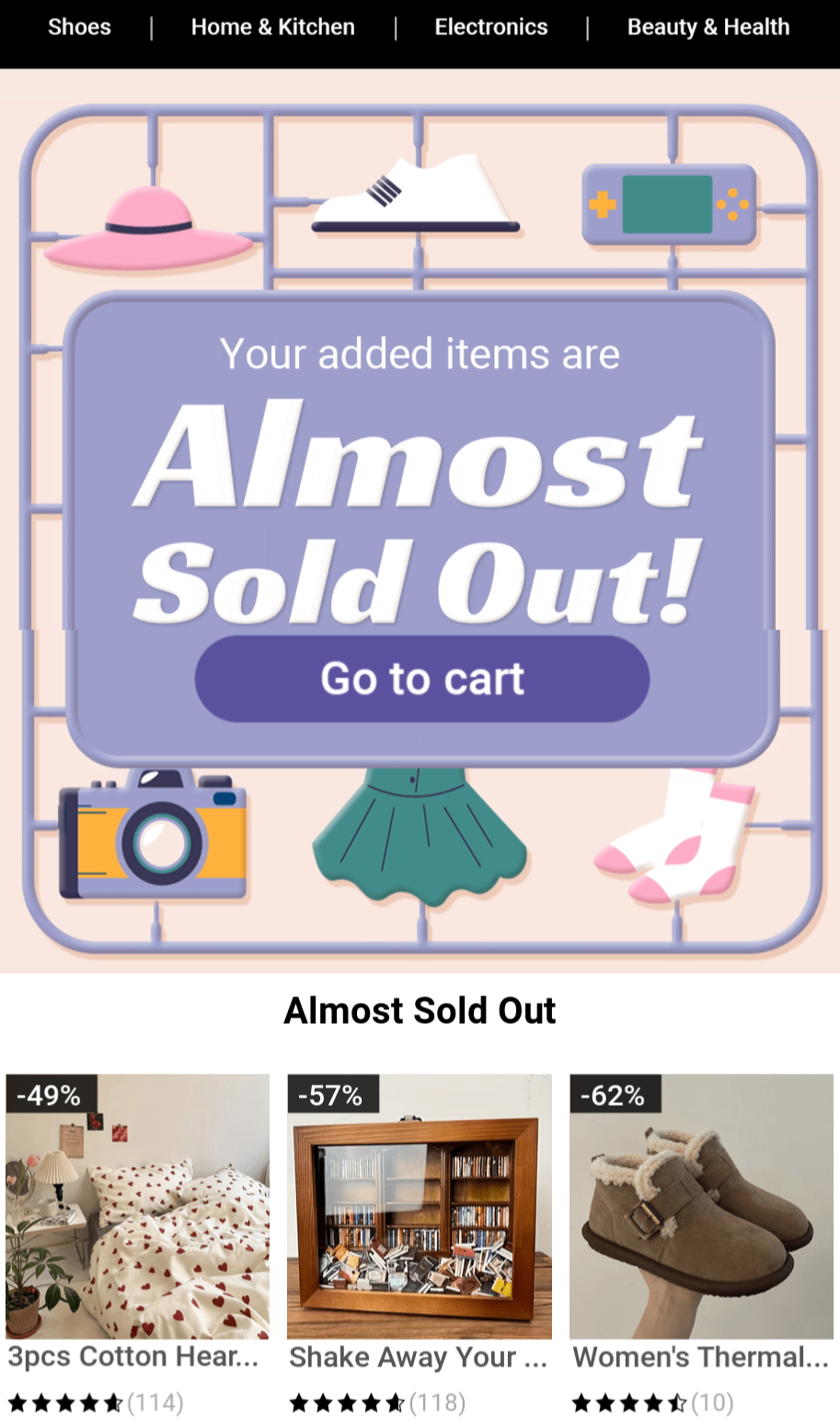
Now that you know the tactics, it’s time to reveal how you can implement all those tips and tricks on autopilot using marketing automation. It will completely change your team's work, reduce the number of their tasks, and ensure consistency.
How to nurture leads using marketing automation?
Nurturing leads using marketing automation is a process requiring you to have a well-thought-out plan to guide prospects toward purchase. With the right tools and professionals, automation can significantly speed up the process and make it more effective and consistent. So let’s learn how to nurture leads using it for your business.
Divide your prospects into segments
Before creating content, you need to divide potential customers into groups based on similar criteria, including demographics, behaviors, engagement levels, and stages in the buyer’s journey. These characteristics will help you group your leads and deliver content tailored to each of the group's needs.
Get ready with targeted content
After analyzing personal data and prospects’ behavior, develop tailored content. It can be presented in various forms, including infographics, blog posts, articles, personalized product recommendations, videos, sponsored content on social media, etc. Despite the content format, it should contain information that resonates with leads’ needs, challenges, preferences, browsing history, user behavior, etc.
Set up automated sequences
Use automation to set up campaigns on autopilot. You can choose the necessary time and messages to be delivered at the right stage in the customer journey. These emails will help you lead prospects down the sales funnel without any need to involve human agents. You can send various types of messages, such as emails reminding potential customers about the abandoned cart, special offers, promo codes, new product launches, etc. For this purpose, consider using behavior-based triggers. This way, leads will receive your message as soon as they perform a specific action.
Score leads
Leverage automation to score leads based on their interactions, including site visits, email opens, clicks, and form submissions. When prospects submit a form for a demo, you need to give more points to these leads. After prospects reach a specific score, you need to assign them to sales representatives for more direct communication.
Integrate several channels
Use automation for multiple channels to ensure prospects can contact you using the preferred channels. Some platforms enable you to send automated messages through social media networks, email, SMS, push notifications, and others. It will help you communicate your message and have a higher visibility.
Use CRM
You should integrate your marketing automation with a customer relationship management system to provide sales and support teams with all the necessary information. With CRM, all your team members will have up-to-date information about prospects’ interactions and behaviors. It will result in more personalized and relevant communication.
Now that you know how to nurture leads with marketing automation, it’s time to discover some platforms that offer this option.
5 Best Lead Nurturing Tools
- SendPulse
- Mailchimp
- Drip
- Keap
- Brevo
There are different tools with comprehensive features and capabilities that allow businesses to optimize lead nurturing processes. We’ve picked the most effective ones, combining several marketing channels to ensure proper communication with potential customers.
SendPulse
SendPulse is an excellent multipurpose marketing solution that empowers you to nurture leads using various tools like email campaigns, subscription forms, chatbots, marketing automation, landing pages, pop-ups, and many other tools. With no skills required, marketers can successfully turn leads into customers.
Robust personalization and segmentation features allow you to design email campaigns that resonate with your audience’s needs, pain points, and interests. You can schedule campaigns and deliver them after leads explore products on your website, subscribe to your email newsletter, sign up for a free trial, etc. Moreover, the platform’s marketing automation enables you to combine several channels and build sequences for them to lead potential customers down the sales funnel.
Below, you can see one of SendPulse’s registration automation templates. The service allows you to set up the sequence and deliver the next email after a subscriber opens the email and confirms it.
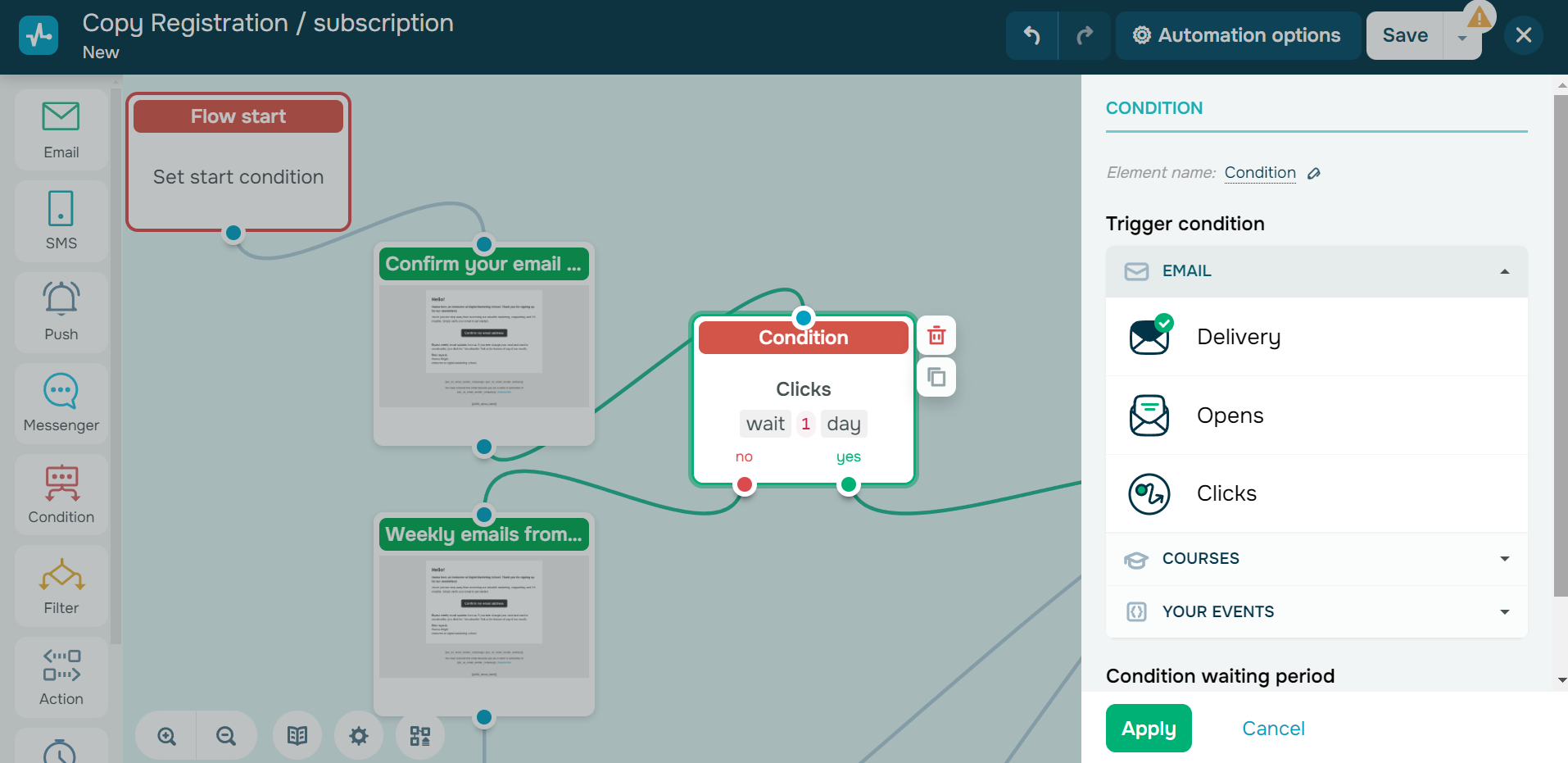
Pricing:
- free plan: 500 subscribers, 5,000 emails, 5 flows, 1 event, and 50 elements in Automation 360 monthly;
- paid plan: 500 subscribers, unlimited emails, 10 flows, 10 events, and 70 elements in Automation 360 for $6.40 monthly, billed annually.
Mailchimp
Mailchimp is a service that provides businesses with all the essential tools for building email campaigns, delivering automated messages, managing social media, creating content, and handing audiences for seamless lead nurturing. It helps marketers improve opens, clicks, and conversions.
The platform’s email automation enables you to add triggers and deliver relevant emails on autopilot. You can do it after prospects view specific pages, any pages, specific products, or any products on your website. Before sending such email campaigns, you can personalize messages, add products prospects are interested in, provide solutions to their problems, and share some data leads are looking for.
Below, you can see how to build an email sequence that congratulates subscribers on the day they have their birthdays.
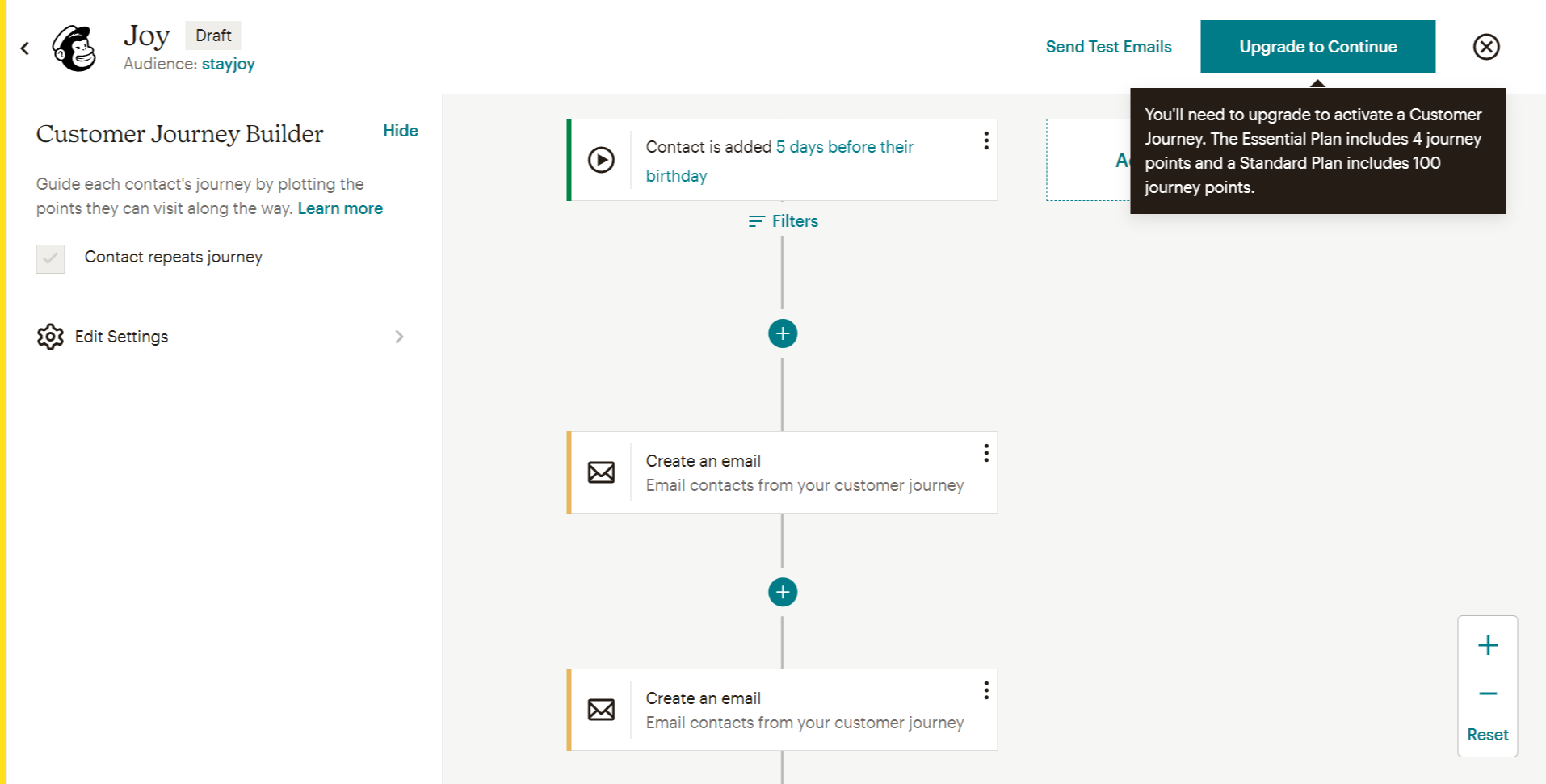
Pricing:
- free plan: 1 audience, signup forms, CRM, 500 contacts;
- paid plan: automation, email scheduling, A/B testing, behavioral targeting, signup forms, and 50,000 contacts for $6.50 monthly for 12 months.
Drip
Drip is a great fit for eCommerce business and their lead nurturing process. With its help, you can set up email workflows to keep prospects constantly engaged and establish good relationships with subscribers by sending them personalized offers, product recommendations, exclusive promo codes, and others to grab their attention. The platform offers email sequences for different scenarios: abandoned cart, win back, post-purchase, birthday, and anniversary, which will help you save time and reduce workload.
With Drip’s workflow builder, you can set up personalized pre-scheduled sends without any special knowledge or skills. By sending automated messages instantly after prospects perform specific actions, you’ll be able to deliver timely campaigns with highly relevant information.
Below, you can see an abandoned cart series created in Drip. The workflow is triggered once prospects add some items to the shopping cart and leave them without checkout. After one hour, the service delivers a reminder email. This sequence is aimed at leads completing a purchase.
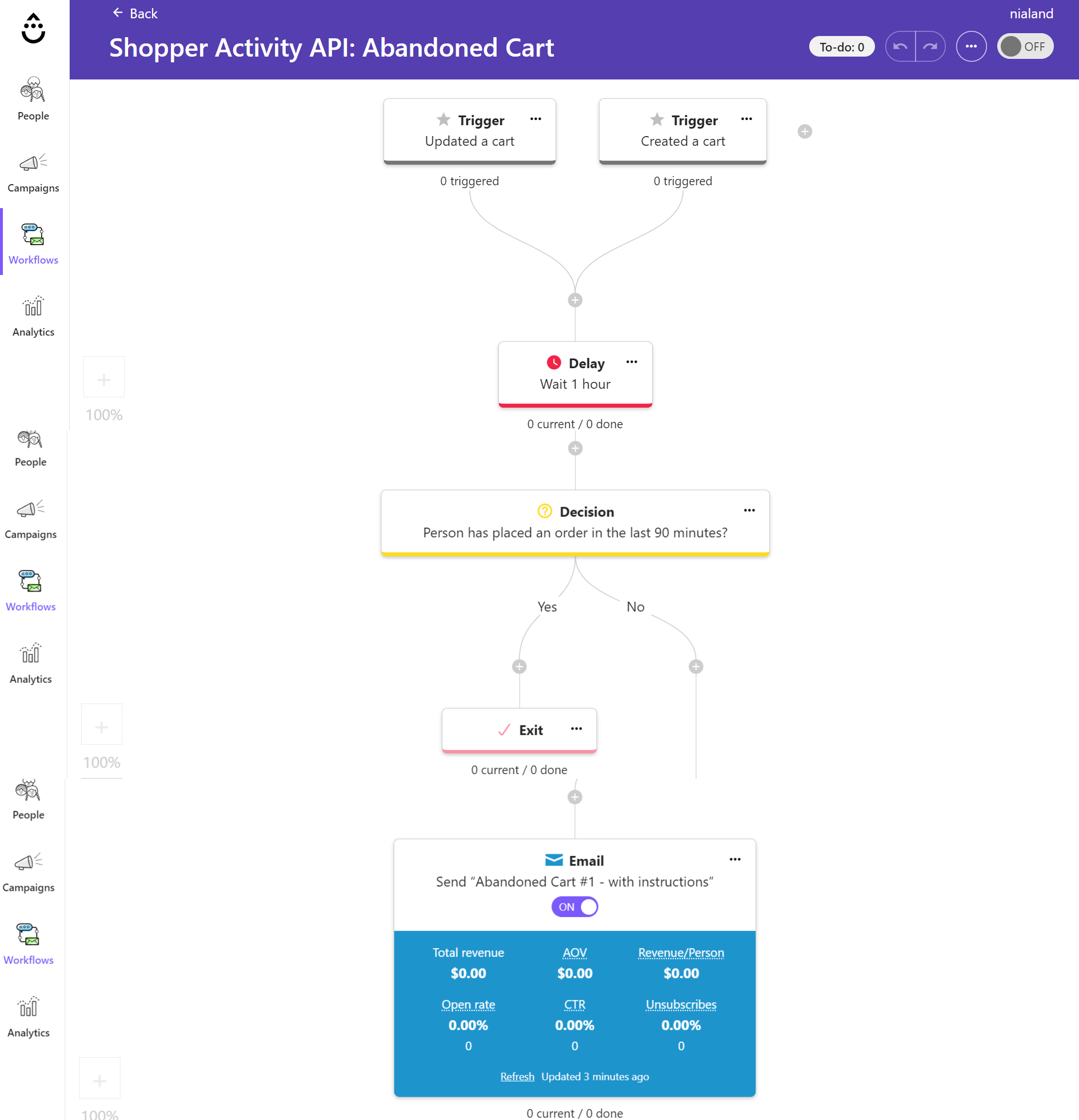
Pricing:
- free plan: 14-day trial;
- paid plan: 2,500 contacts, unlimited email sends, onsite campaigns, and free migration for $39.
Keap
Keap is a platform that allows you to deliver personalized, curated emails and attract good prospects. When using the service, you can seamlessly interact with your audience, nurture potential customers, and lead them to the purchase. Automated emails will enable you to convert leads into customers, interact with your current customers, and initiate more repeat purchases.
With the platform’s rich library of email templates, you’ll find the necessary layouts and styles. Easy Automation templates cover various scenarios like new lead follow-up, free consultation booking, invoice reminders, etc.
Below, you can see how to set up an automated email reminding prospects about the upcoming event.
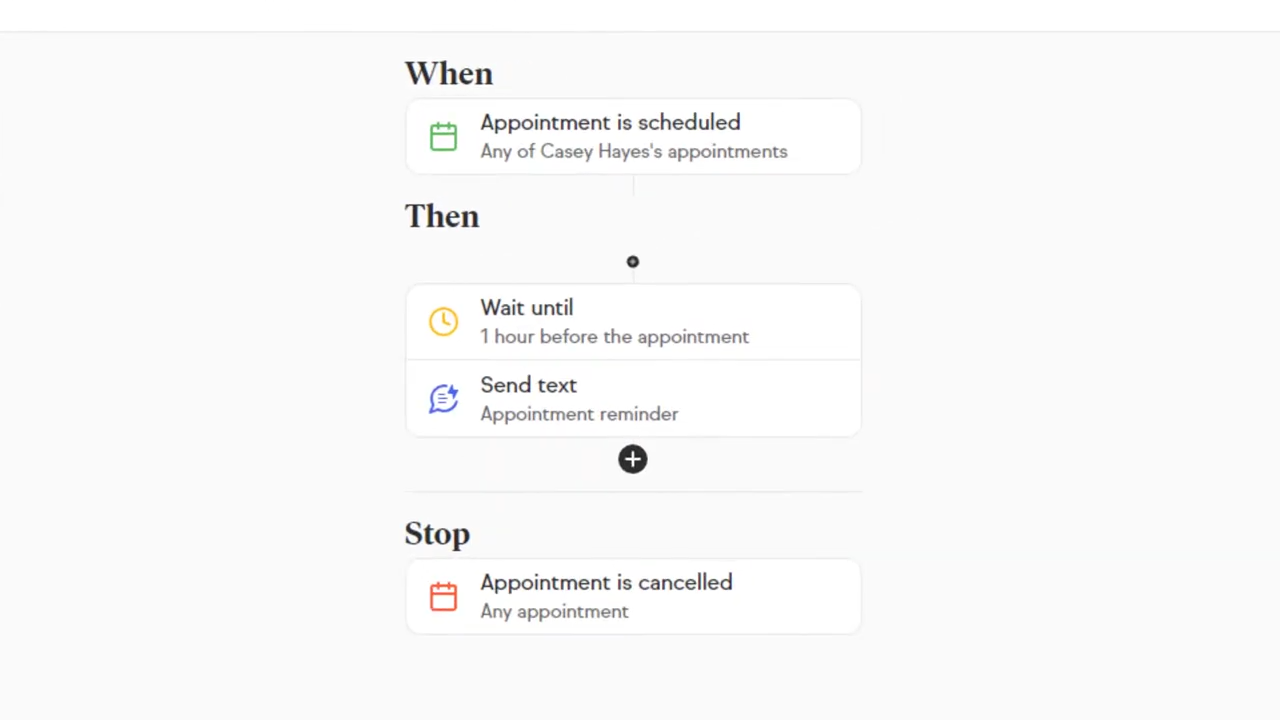
Pricing:
- free plan: 14-day trial;
- paid plan: marketing automation, email marketing, automated lead capture and follow-up, lead and client management, appointments, sales pipeline and analysis, quotes, invoices, and payments for $189 monthly.
Brevo
Brevo has a lot to offer for marketers, including email marketing, SMS and WhatsApp marketing, web push notifications, CRM, and marketing automation services. With the platform’s help, you’ll be able to seamlessly establish relationships with subscribers by sending them product welcome emails, announcements, anniversary emails, etc.
Brevo’s segmentation feature allows you to group prospects based on their behavior and activity and create personalized campaigns aligning with their requirements. AI will come in handy when you don’t want to create your own email campaigns and deliver these emails at the right time.
Below, you will find an automated welcome email created with Brevo. The email is delivered to new subscribers after they sign up for the email newsletter.
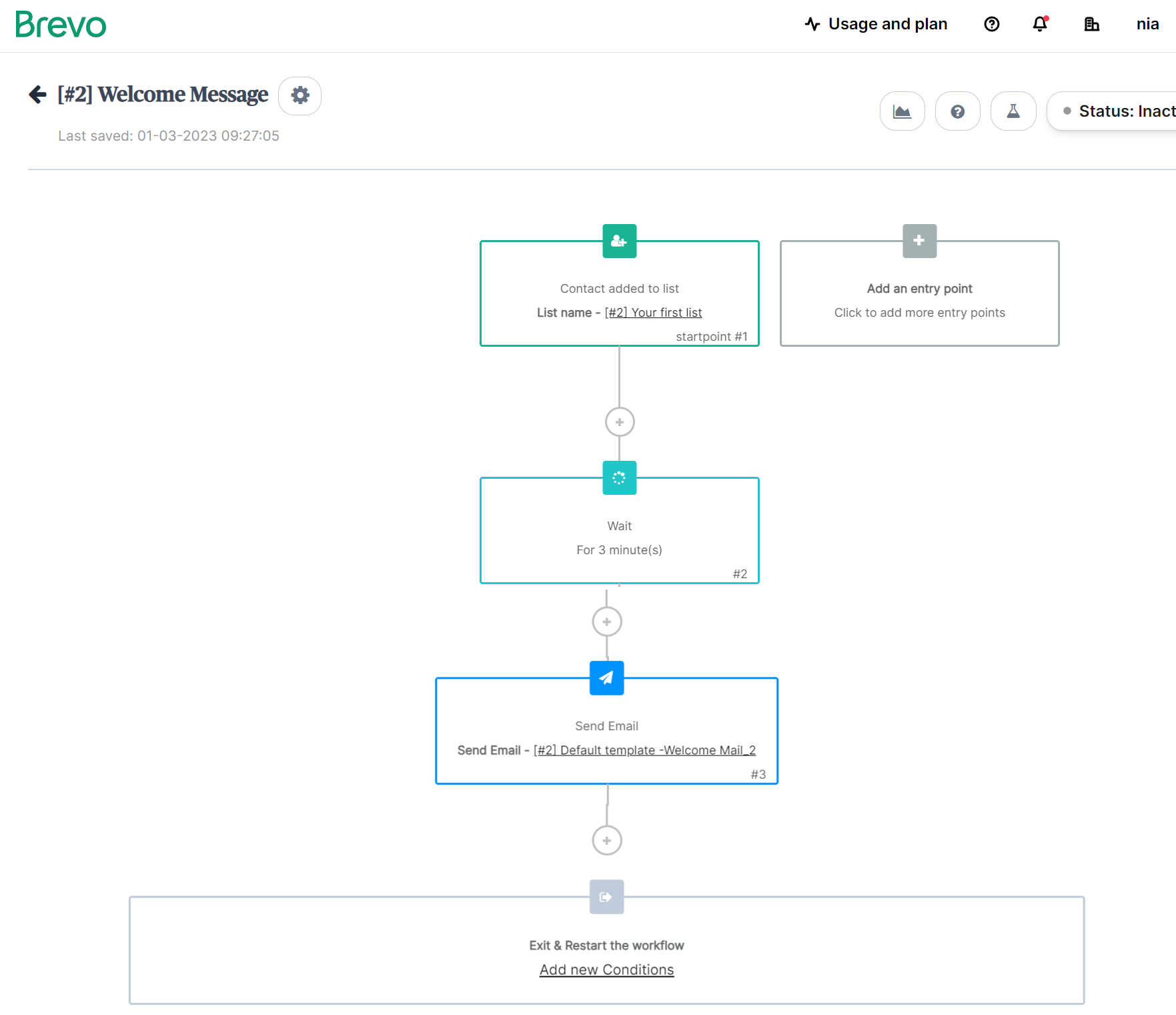
Pricing:
- free plan: 300 emails daily, customizable email templates, SMS & WhatsApp campaigns, and more;
- paid plan: 5,000 emails, no daily sending limit, and basic reporting & analytics for $9 monthly.
Now that you have some tools in mind, it’s time to explore some converting best practices you can implement using one of the platforms above.
10 Effective Lead Nurturing Best Practices to Consider
- Create clear CTAs
- Personalize your emails
- Run retargeting campaigns
- Collect information about leads from marketing, sales, and support teams
- Use paid ads
- Identify top-priority leads using lead scoring
- Provide educational content
- Follow up consistently
- Choose the right timing
- Use A/B testing to select the best option
There are numerous lead nurturing best practices to boost the effectiveness of your marketing efforts. We’ve compiled the best steps for you to consider.
- Create clear CTAs. If you want to convert a lead, they should clearly understand what they need to do. Ensure the next step in their buyer journey is logical and obvious. By logical, we mean that it should correlate with the stage your leads are in now. Create different CTAs for each stage. For example, if a user is unfamiliar with your service, ask them to “Get started” or “Learn more.” If a lead is qualified enough and ready to buy, use the following CTAs as the last push: “Grab my discount” or “Buy now.” You can motivate them with a time-limited offer.
- Personalize your emails. Sending the same email to your entire mailing list is a thing of the past, especially when considering lead nurturing. Sharp competition for subscribers’ attention makes marketers do their best to engage users. Personalization allows you to provide your lead with an individual approach with minimal effort. Collect personal data about subscribers and use it in your email campaigns. This includes their name, gender, location, interests, and hobbies, etc.
- Run retargeting campaigns. They are focused on leads who have already interacted with your brand. With a retargeting campaign, you can win them back and remind them about the product they liked. This will help you increase sales and brand recognition. You can set up such campaigns using Facebook Pixel and Google Ads.
- Collect information about leads from marketing, sales, and support teams. Don’t delegate this task to your marketing or sales team alone. Users often address their questions and troubles to a support team, so this team knows pretty much about your clients. They can easily tell you about the problems your leads face when using your product, and as a result, you can regularly improve your product.
- Use paid ads. This form of online advertising is also known as PPC. It means that you pay a search engine fee each time a user clicks on your ad. Paid ads are placed above the organic results on the SERP. For better performance, we recommend you research and find out the keywords that people use as search queries to find your product and use them in your ads. This way, you’ll increase your site traffic and sales.
- Identify top-priority leads using lead scoring. Rank potential customers based on their engagement level and likelihood to purchase your products. When performing lead scoring, pay attention to the following factors: email opens, content downloads, forms filled, email clicks, demographics, etc. These will help you identify high-scoring prospects who are likely to convert into clients soon.
- Provide educational content. When sharing content with prospects, ensure that this content is valuable and relevant at each stage of the customer journey. You can create a blog, whitepapers, and case studies to establish awareness, brand recognition, and trust. Good quality content is essential for building good relationships with leads and bringing them closer to making a positive decision. Besides, it would be great to share some useful resources like guides, checklists, or webinars to solve potential customers’ problems. Online and offline events can also be great sources of new valuable information for prospects. Webinars, trade shows, conferences, product launches, local meetups, and workshops are excellent ways to communicate with potential customers face-to-face and deliver your message directly to them.
- Follow up consistently. Identify the perfect, consistent schedule for contacting your potential customers. However, you shouldn’t overwhelm prospects with emails by sending them too often. Your interactions need to be regular to establish engagement and trust. Consider using automation to deliver your messages at the right moment and stay top of mind for prospective customers.
- Choose the right timing. Make sure you are sending content that complies with their customer journey stage. For instance, you can deliver educational materials about your product in the awareness stage while sharing customer success stories and testimonials in the decision stage.
- Use A/B testing. When you assess campaign performance and you find space for optimization, consider leveraging A/B testing. It will help you decide which campaign elements work best for your audience, including subject lines, email content, and timing. As a result, you’ll create campaigns that resonate with your prospects and bring better conversion rates.
Now that you have some useful points to pay attention to when implementing your lead nurturing campaigns, it’s time to look at successful examples. They’ll help you find out where to start when nurturing your leads.
Outstanding Examples of Lead Nurturing Campaigns to Get Inspired
To have a clear understanding of lead nurturing and its processes, we invite you to explore some examples from brands. In these examples, you’ll see how businesses use different techniques and channels to reach their prospects and turn them into customers.
Apple
Apple nurtures its leads by providing a special offer. The company encourages potential customers to enjoy Apple Music for free for 3 months to listen to more than 100 million songs ad-free and without any additional charges. This attractive offer might drive customer decisions, and then these people might stay with Apple Music longer than expected.

Luna Retreats
After users search for specific tours or explore such social media profiles, Luna Retreats targets these people with ads that appear when users swipe Stories on Instagram. This Instagram ad allows the company to educate prospects about their business and product and encourage potential customers to join the retreat. As a result, leads will consider this option when making a decision.
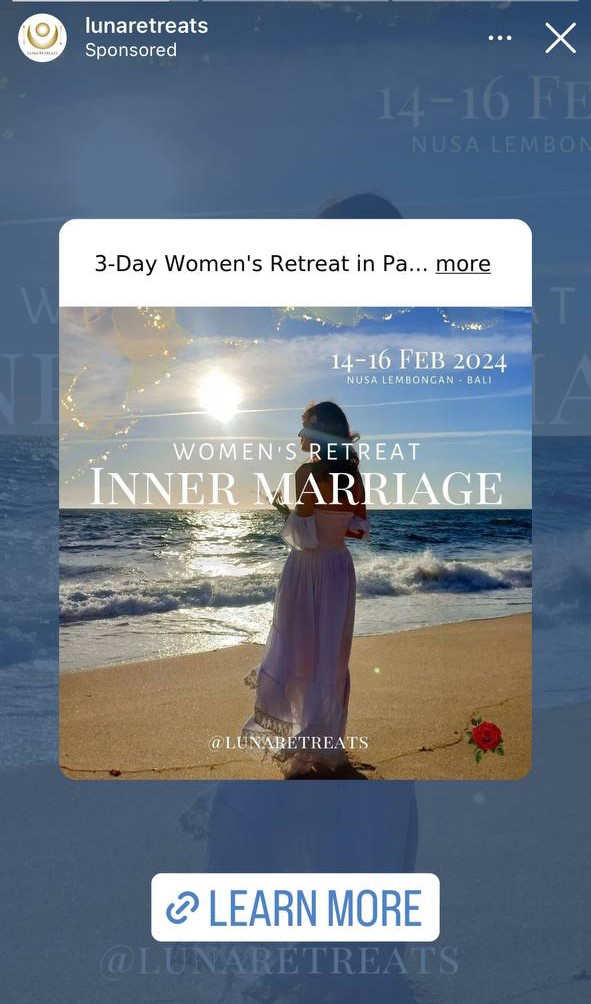
Innisfree
Innisfree, a Korean skincare brand, nurtures leads with numerous types of emails, including one in the example below. This email campaign informs prospects about the free shipping. The offer was available for a specific period, encouraging fear of missing out and fast decision-making. The company provided subscribers with a promo code enabling them to have their items delivered for free in case their order was above 10 dollars.

To wrap up, lead nurturing is a vital process for every business because it’s responsible for establishing positive relationships with potential customers by sharing all the information and solutions they need. By successfully implementing lead nurturing techniques, you’ll be able to generate better results associated with potential customers.
Last Updated: 15.10.2024

or